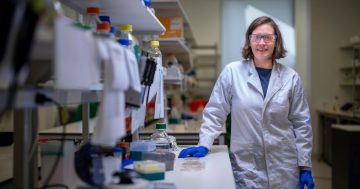
It’s not everyday that you get to interview a rocket scientist whose invention is helping to make interplanetary travel a reality.
Dr Christine Charles is head of the Space Plasma, Power and Propulsion Laboratory at the Australian National University. For the past decade and a half her research has been focused on finding new, more efficient ways to propel vehicles (and humans) through space.
“I’ve always been interested in science, physics and engineering. But my interest in space propulsion started 15 years ago when I spent time with a NASA astronaut in the United States. That was the trigger,” Dr Charles says.
Dr Charles is the inventor of the Helicon Double Layer Thruster, a new type of space engine that could dramatically reduce the time taken to travel to Mars. This new propulsion concept has the potential to propel humans throughout the solar system and greatly decrease the costs of maintaining satellites and spacecraft in their desired orbits.
While results so far have been positive, she says that it will still be “five, ten, fifteen years” before the technology could be widely used for space travel. In the meantime, her team has everything it needs to test rockets thanks to a space simulator (a metal box that sucks air out to produce a vacuum similar to space, pictured) at Mount Stromlo.
Dr Charles has a French engineering degree in applied physics, a PhD in plasma physics, a French Habilitation thesis in materials science and a Bachelor of Music degree in Jazz from the ANU (she also performs keyboard jazz with her group, Harmonic Propulsion).
She says that she gets most excited about getting young people involved in science, publishing papers and discussing her findings with others. She shares her knowledge on ABC Catalyst, the Discovery Channel and through radio and public lectures. Over the weekend, she also presented at TEDx Canberra, where she spoke about potential ways to get to Mars and back.
“It sounded exciting and like a great way to reach out to the community. There’s so much going on at Mount Stromlo that’s for Canberra and for Australia, and it’s important that we share what’s going on,” she says.
Dr Charles has demonstrated her new space engine both at NASA and the European Space Agency, as well as at EADS-ASTRIUM, which runs the Airbus 380 and the Ariane Rocket program. She has also been awarded five Visiting Professorships at the University of Orleans in France since 2004.
But while her research has taken her all over the world, she says that there’s something unique about Canberra, where she has worked since 1992.
“In Canberra, you are far away from where it’s really happening, but that means you have to be creative and think about problems from a different angle, because you have to be cost effective too,” she explains.
“The only way we can survive is to be passionate, and we do a great job. We’re known worldwide for our research and training. It’s easy to be in direct contact with key players, so we do collaborate a lot, and we love people to come and visit us too.”
(Photo credit: SP3 lab at ANU)
















